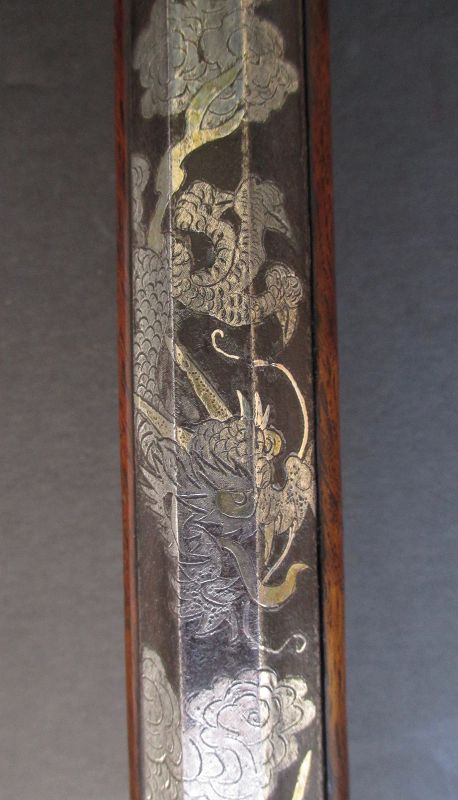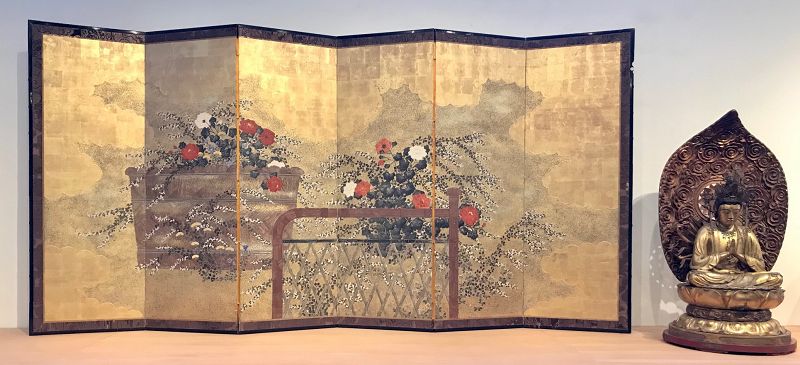Rare Japanese Antique Matchlock Tanegashima Silver Dragon, Tokugawa
Antique Japanese long tanegashima matchlock rifle with intricate silver and gold inlay of a dragon in swirling clouds. The cast iron barrel is further decorated with a five character mark and the crest of the Tokugawa shogunate. The burl wood handle is set with elaborate brass work incised with designs of a rabbit, bamboo, flowers and birds.
The underside of the barrel has a maker's inscription that reads:
摂州堺之住
野田長右衛門作
Work of Noda Chо̄emon, resident of Sakai, Sesshū. (Sesshū is another name for Settsu Province so the maker lived in the area of Osaka.)
The five character mark in silver on top of the gun barrel reads:
松平土佐守 Matsudaira Tosa-no-Kami.
Kami (rank of lord) of Tosa Province. Possibly this could refer to Matsudaira Tadayoshi, one of Tokugawa leyasu's sons.
Guns were first introduced to Japan during the Sengoku era through the Portuguese in 1543. From just a couple samples, Japanese metal smiths were able to copy and expand upon the matchlock rifle, changing warfare in Japan forever. Used primarily by the samurai class and their ashigaru (foot soldiers), Japanese guns had a wide range of sizes and uses. During the Edo Period, the rise of the Tokugawa shogunate and the closing off of Japan to outside influences (other than limited Dutch trade) led to relative large scale peace and prosperity. This did not dissuade the production of firearms and matchlock guns and rifles continued to be produced and collected especially by the ruling class.
Age: Edo Period (1603-1868)
Dimensions: 45" long
https://zentnercollection.com/product/rare-japanese-antique-matchlock-tanegashima-silver-dragon-tokugawa/


